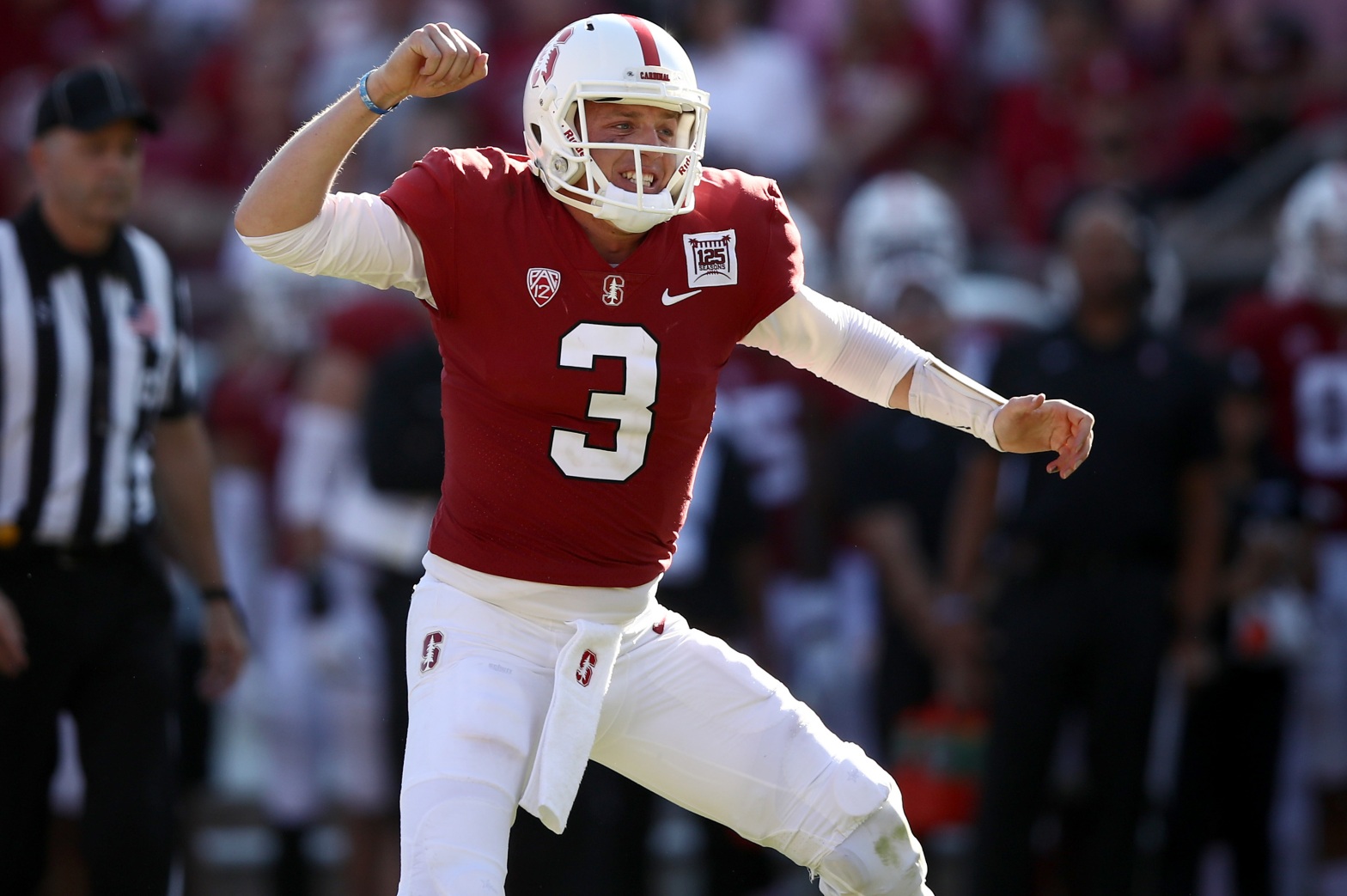Photo via Ezra Shaw
The current era of college football has shown that recruiting is not solely happening in high school.
It is also happening in college via the transfer wire.
It is becoming the next way to collect diamonds in the rough. The next market inefficiency, like the “Moneyball” Oakland Athletics of old.
That inefficiency is becoming more frequent among quarterbacks, where the reward reaps plentiful benefits for giddy college football programs.
After all, three out of the four teams in the 2019-20 College Football Playoff had a starting quarterback that was a transfer (Joe Burrow of LSU, Justin Fields of Ohio State and Jalen Hurts of Oklahoma).
Even without looking at championship-caliber teams, quarterback transfers are still becoming more abundant. Of the new crop of transfer quarterbacks going into the 2020 season, though, none might be as impactful as K.J. Costello, who transferred from Stanford to Mississippi State.
Hold the phone. K.J. Costello? What about Jamie Newman taking his talents to Georgia? D’Eriq King to Miami? Anthony Brown to Oregon?
While those transfers will hopefully net wins for their new programs, Mississippi State bringing Costello to the fold might have present and future ramifications that benefit Costello and the program entirely.
Let’s begin by looking at what Costello brings to the Bulldog table. Costello originally hailed from Stanford, where in his 2017 and 2018 seasons he played in 24 games and combined for 5,113 yards and 43 passing touchdowns. The bulk of those numbers came in 2018, where the California native threw for 3,540 yards and 29 touchdowns. In particular, Costello threw the ball 413 times, which would rank 20th in the entire FBS during that season. Despite wanting to build off the career season, injuries limited Costello to only five games played and a hair over 1,000 yards in 2019. With the transfer, Costello brings one remaining year of eligibility.
The transfer for Costello is not only meant to rebound from an injury-laden season, however. It is meant to untap even more of his explosive throwing prowess.
Luckily for him, he has Mike Leach.
Leach, who was recently the head coach of the Washington State Cougars, takes the air raid offense to the next level, and then some. Over the past four seasons, his quarterbacks collectively averaged 691 attempts per season. Within that same span, the Cougars never ranked lower than third in passing yards per game (the rank of third came in 2016, where they averaged only 362.5 yards). With a coach built around non-stop quarterback play, Costello, if healthy, can potentially unlock a better version of his 2018 season, which could open the eyes of NFL scouts in the upcoming draft.
Individually, the transfer gives Costello and opportunity to further develop his game and transform it to another level under the guidance of a head coach that will know how to utilize him. However, the transfer does not take the cake over other transfers just by potential production in only one season.
What does put this transfer over the others is the long-term impact it has on the Mississippi State football program.
Before the Leach hire, the Bulldogs were as run-oriented as they came (dating back to 2016, the Bulldogs never ranked lower than 23rd in rushing yards per game). While that was productive, it was not supplemented with a balance of passing to make the offense dominant. Since the graduation of Dad Prescott in 2015, Mississippi State has averaged sub-par passing yard per game totals (182.5) and passing attempts in a season (350.5). These totals put Mississippi State at a disadvantage when it came to competing with other SEC teams, including that of Alabama, LSU, Auburn, Florida and Georgia, among others.
With the transfer, the Bulldogs have emphasized that their offense is willing to become three-dimensional. With Leach as head coach and Costello as a signal-caller, the Bulldogs can begin the transformation to becoming a more viable program that can contend with the blue bloods of the SEC.
The impact of the transfer could trickle down to the high school level, as it gives high school quarterback recruits another schooling option that can unlock their full potential as a prospect. While it is true Mississippi State does not have the same luxury as other elite recruiting programs in Georgia, Miami and Oregon on the recruiting front, they potentially could if the modernization on offense is successful. That modernization and transformation begins with Costello.
Costello might not be a household name on the transfer quarterback market, but for the Mississippi State football program and Costello himself, the market inefficiency could prove to be priceless for both parties when it is all said and done.

